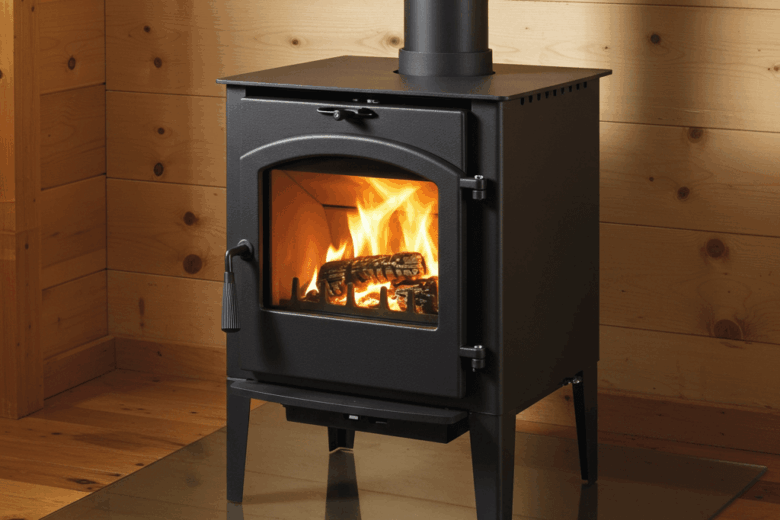Wood stoves have long been a favored heating choice for small homes, cabins, and tiny houses due to their efficiency, affordability, and ability to provide a cozy atmosphere during colder months. As homeowners seek energy-efficient solutions, the demand for compact, EPA-certified models has surged. These stoves not only offer a reliable source of warmth but also cater to the increasing need for sustainable, space-saving options. If you’re considering heating options for your smaller living space, exploring the best wood stoves for small homes 2025 can help you find a model that fits your needs while keeping your space warm and eco-friendly.
1. What Makes a Wood Stove Ideal for a Small Home?
Choosing the right wood stove for a small home requires a balance of size, heat output, and efficiency. A wood stove should fit your space comfortably, provide ample heat, and meet modern environmental standards. Here’s what to look for when selecting a stove for a small home:
Size vs. Heat Output (Why BTU Rating Matters)
When selecting a wood stove for a small home, heat output is key. The BTU rating of a stove indicates how much heat it can produce, and choosing the right size stove helps you avoid wasting energy. A stove that’s too large will waste fuel, while one that’s too small won’t adequately heat your space.
For small homes, it’s important to match the stove’s BTU output to the square footage of the space. A stove with a lower BTU rating (around 25,000 to 40,000 BTUs) will typically be ideal for smaller areas, preventing overheating and ensuring efficient heating without excessive fuel consumption.
Space-Saving Design (Freestanding, Corner-Fit, Wall-Clearance)
A compact, space-saving design is critical in small homes. Look for stoves that can be corner-mounted or installed with minimal clearance to walls and combustibles, allowing for maximum use of your living area. Many modern wood stoves are designed to fit into tight corners or small alcoves, making them perfect for homes with limited space.
The stove should also have a freestanding design, giving it flexibility in installation and placement. Some models are designed to be installed against walls or in smaller nooks, making them even more space-efficient.
Efficiency Standards: EPA 2020 Certified Units
For both environmental and practical reasons, choose a stove that is EPA 2020 certified. These units meet stringent emissions standards and are far more efficient than older models. They provide higher heat output for the same amount of fuel and create less pollution, which is particularly important in small homes where air quality can be a concern.
Modern EPA-certified stoves burn wood more completely, reducing creosote buildup and increasing heating efficiency. This can save you money in the long run, as you’ll need less fuel to keep your home warm.
Safety Features: Low Clearance, Mobile Home Approved, Auto Shut-Off
In small homes, safety is a top priority. A good wood stove should come equipped with safety features like:
-
Low clearance to combustibles: Ensuring that the stove can be placed closer to walls or other combustible materials without posing a fire risk.
-
Mobile home approval: If you’re living in a mobile home or trailer, look for stoves that are specifically mobile home-approved, as they are designed to meet stricter safety standards.
-
Auto shut-off or overheat protection: This feature will automatically turn off the stove if it reaches unsafe temperatures, providing an extra layer of security.
These safety features are essential for a small home, where space limitations can make it harder to maintain a safe distance from heat sources.

Our Top 7 Picks for 2025
When choosing the perfect wood stove for your small space, it’s important to consider factors like BTU output, heating capacity, design, and budget. Below are our top picks for 2025, each suited for different needs and preferences.
🪵 Drolet Escape 1500 – Best Overall for Tiny Homes
-
BTU Rating: 55,000
-
Heating Capacity: Up to 1,800 square feet
-
Pros: Efficient and reliable with a long burn time. The compact design fits easily into small spaces while delivering significant heat output. It’s EPA-certified, ensuring clean combustion.
-
Cons: May be a bit large for extremely small areas, making it better suited for slightly larger tiny homes or cabins.
🔥 Vogelzang Defender TR001 – Most Budget-Friendly
-
BTU Rating: 55,000
-
Heating Capacity: Up to 1,200 square feet
-
Pros: An affordable option that offers great value for the price. This stove provides efficient heat with simple installation. It’s perfect for those on a budget but still needing reliable heating.
-
Cons: Basic design with fewer features compared to higher-end models, and it can require more maintenance.
🧱 Jøtul F 602 V2 – Best Cast Iron Option
-
BTU Rating: 45,000
-
Heating Capacity: Up to 800 square feet
-
Pros: Known for its durability, the Jøtul F 602 V2 is a classic cast iron stove that provides even heat distribution. Its timeless design fits perfectly in small, stylish homes.
-
Cons: It has a smaller heating capacity, so it’s ideal for tiny spaces rather than larger homes.
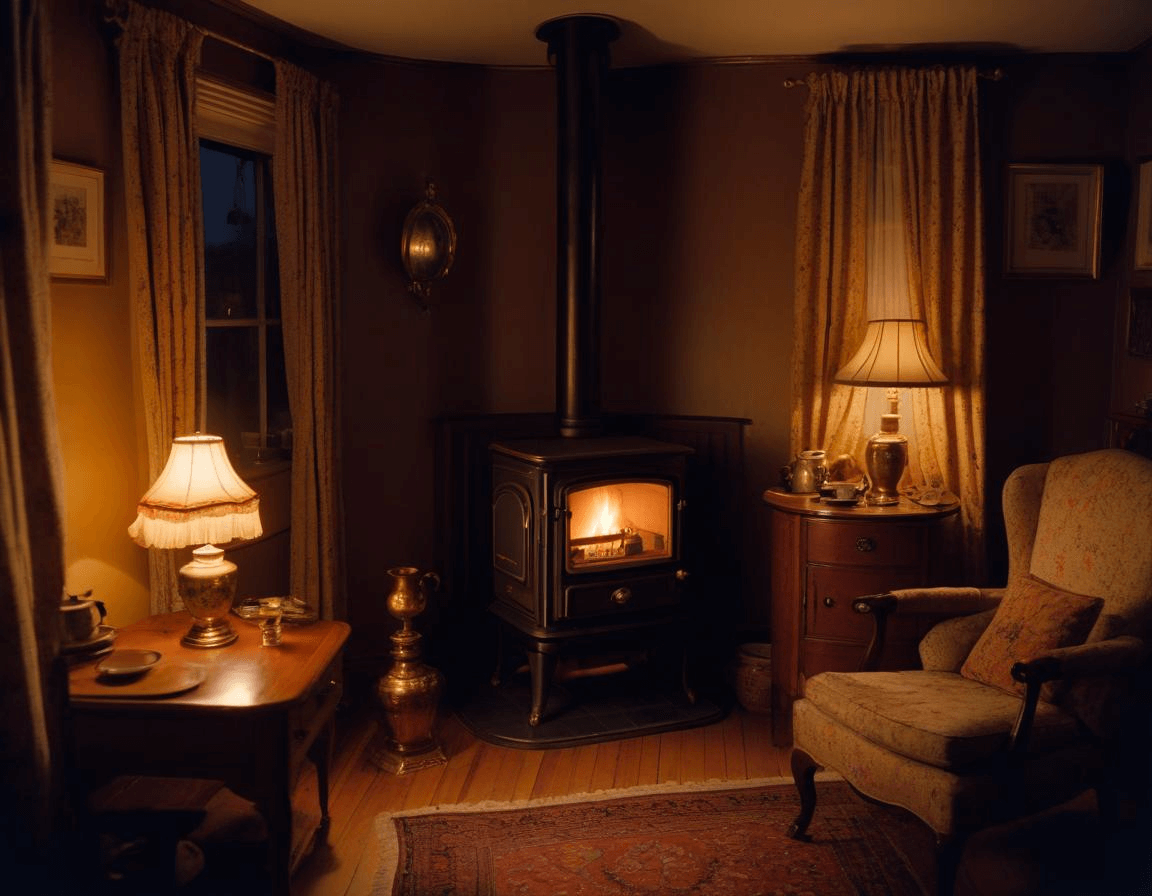
🌲 US Stove Company Logwood 1269E – Rustic & Simple
-
BTU Rating: 60,000
-
Heating Capacity: Up to 1,500 square feet
-
Pros: A rustic, simple design with a large firebox that can hold big logs, perfect for those looking for a more natural and hands-on stove experience. The Logwood 1269E is durable and efficient.
-
Cons: The design may not suit modern or sleek interiors, and it requires more frequent cleaning.
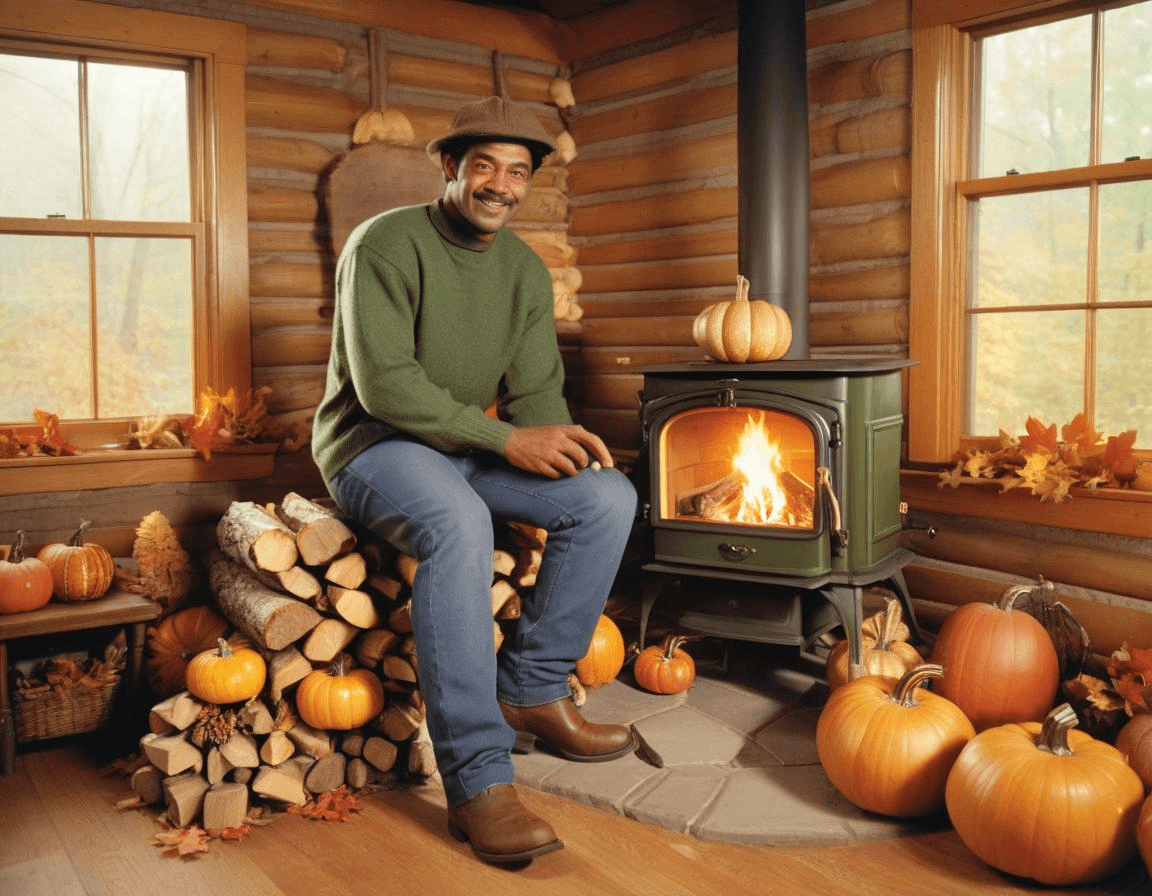
🏡 Englander 1200 – Best for Mobile Homes
-
BTU Rating: 50,000
-
Heating Capacity: Up to 1,200 square feet
-
Pros: Specifically designed for mobile homes, it’s compact but powerful. The Englander 1200 offers safe, efficient heating with a clearances-to-combustibles feature, making it ideal for tight spaces.
-
Cons: May not be suitable for larger spaces due to its relatively small heating capacity.
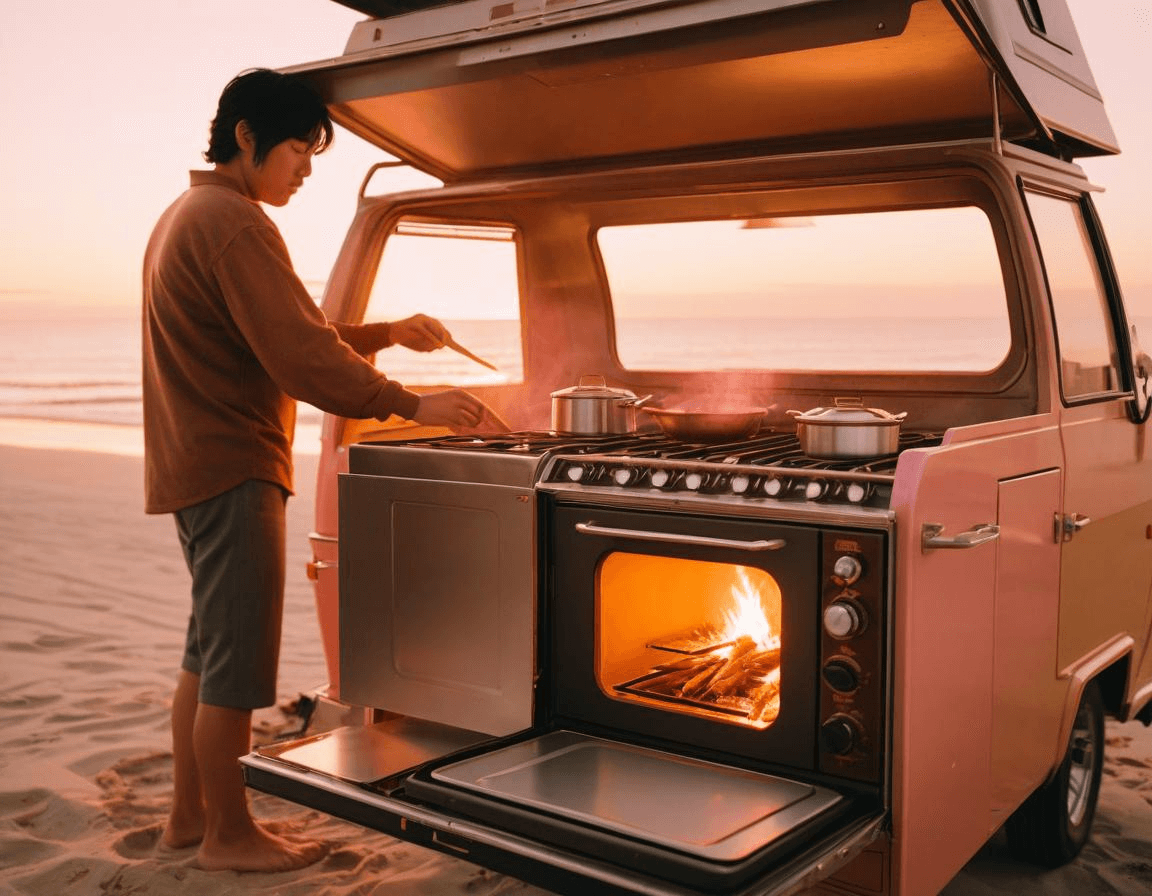
✨ Pleasant Hearth WS-2417 – Modern Look, Strong Output
-
BTU Rating: 55,000
-
Heating Capacity: Up to 1,800 square feet
-
Pros: Stylish modern design with a high-efficiency rating, providing both warmth and aesthetic appeal. It’s EPA-certified and has a sleek, contemporary finish.
-
Cons: The modern design might not appeal to those who prefer a more traditional look.
Photo Suggestion: A modern, contemporary living room with the Pleasant Hearth WS-2417 stove as the focal point, surrounded by minimalist décor.
🛠️ Grizzly Cubic Mini Wood Stove – Best for Vans and Tiny Cabins
-
BTU Rating: 23,000
-
Heating Capacity: Up to 400 square feet
-
Pros: Perfect for extremely small spaces, such as tiny homes, vans, or cabins. The Grizzly Cubic Mini is compact and portable, yet efficient.
-
Cons: The small size limits its heating capacity, making it ideal only for tiny spaces.
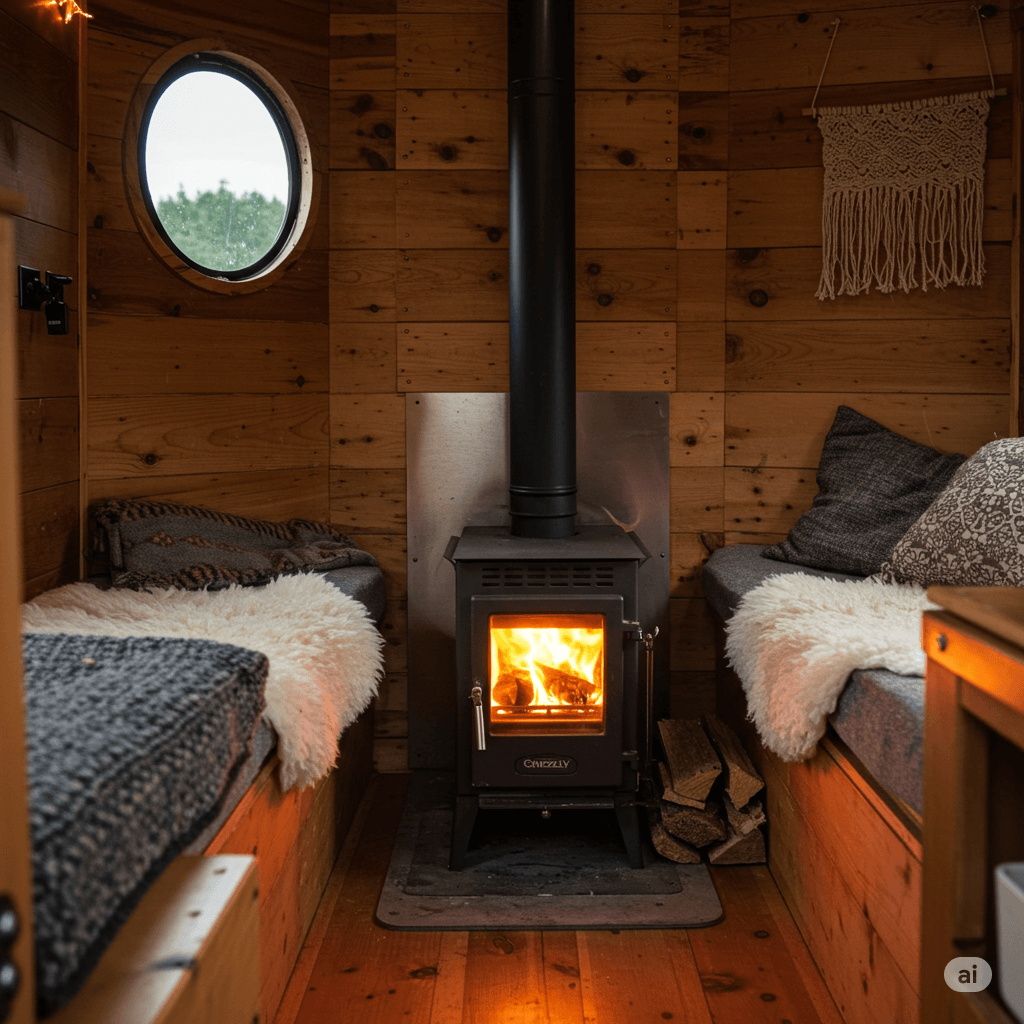
How to Choose the Right Wood Stove for Your Space
Selecting the best small wood stove isn’t just about picking the one that looks good—it needs to match your home’s size, heating requirements, and installation setup. Here are four key factors to help you make an informed choice.
Measuring Your Room & Calculating BTU Needs
Before you choose a stove, determine how much heat your space actually requires:
-
Measure the square footage of the area you want to heat.
-
Multiply by 20–25 BTUs per square foot as a general rule. For example, heating 800–1,000 sq. ft. may require a stove rated for 16,000–25,000 BTUs.
-
Also consider ceiling height, insulation quality, and climate zone.
Choosing a stove with the appropriate BTU output ensures comfort without overheating or wasting fuel.
Catalytic vs. Non-Catalytic Wood Stoves
There are two main types of combustion systems:
-
Catalytic stoves use a catalyst to burn smoke and gases at lower temperatures, offering longer, more efficient burns, ideal for consistent heat over time.
-
Non-catalytic stoves are simpler, require less maintenance, and produce strong, quick heat, better suited for shorter burn cycles.
If you prefer long overnight burns with steady heat, go catalytic. For quicker, less technical heating, go non-catalytic.
Cast Iron vs. Steel Construction
The material of the stove affects both performance and aesthetics:
-
Cast iron holds and radiates heat longer after the fire is out. It also offers more decorative styling.
-
Steel stoves heat up more quickly and usually cost less, with simpler, modern designs.
If you’re heating a space you use intermittently, a steel stove may serve you better. For constant, even warmth, cast iron is the way to go.
Venting Considerations & Pipe Sizing
Proper venting is essential for stove safety and performance:
-
Make sure your stove pipe is the correct diameter as specified by the manufacturer.
-
Use double-wall stovepipe if your clearance to combustibles is tight.
-
Always maintain an upward slope in the flue for proper draft.
-
If venting through a ceiling or wall, ensure you use a Class A chimney system for code compliance.
A poorly sized or installed stove pipe can reduce efficiency and increase creosote buildup, leading to safety hazards.
Installation Tips for Small Homes
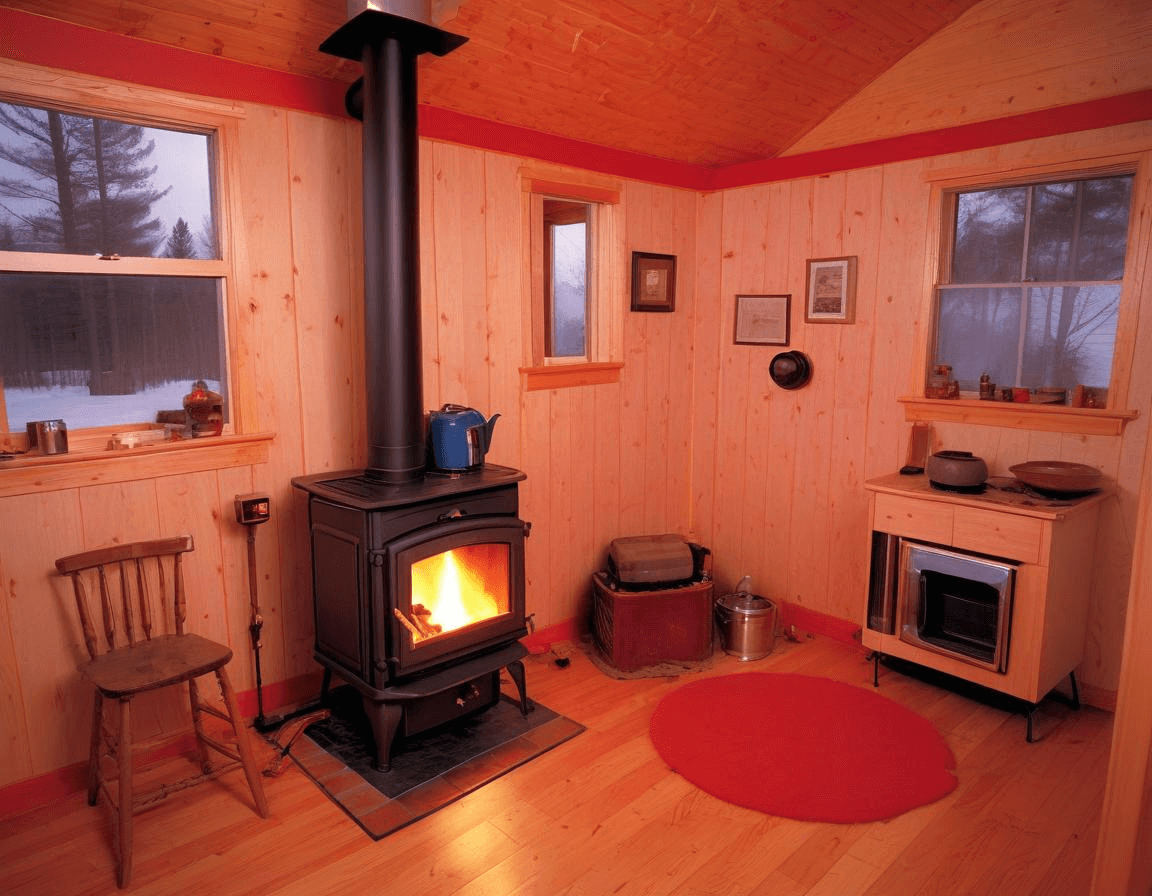
Installing a wood stove in a small home requires careful planning to ensure safety, efficiency, and code compliance. From choosing the right venting setup to protecting your walls and meeting local codes, here’s what to consider:
Venting Options: Through-Wall vs. Through-Roof
Your venting method will impact both safety and stove performance:
-
Through-roof venting is often more efficient, allowing for a straight vertical draft that improves airflow and reduces creosote buildup.
-
Through-wall venting can work in tight spaces but typically involves a horizontal section that may require more frequent cleaning and draft assistance (e.g., a draft inducer or taller chimney stack).
Regardless of method, always use Class A chimney pipe for venting beyond the stove pipe and follow manufacturer recommendations.
Wall and Floor Protection
Small spaces mean you’re more likely to have furniture and walls nearby. Use these safety measures:
-
Install a hearth pad under and around the stove made from non-combustible materials (tile, cement board, etc.).
-
Add heat shields or fire-rated barriers to adjacent walls to reduce required clearance.
-
Use double-wall stove pipe to reduce heat radiation and minimize clearance space.
These measures are especially important in cabins, RVs, and tiny homes with limited space between surfaces.
Mobile Home Requirements
If installing in a mobile or manufactured home, specific regulations apply:
-
Choose a stove that is UL 1482 listed and approved for mobile homes.
-
Install an outside air intake to provide combustion air from outside rather than drawing indoor air (important for sealed environments).
-
Use anchoring systems to prevent the stove from tipping or shifting during movement.
Following these guidelines ensures safety and often satisfies local code inspectors.
Safety Codes & Clearance Regulations (NFPA 211 Basics)
Compliance with NFPA 211 and local building codes is essential for safe installation:
-
Maintain the manufacturer-specified clearance from the stove to walls, ceilings, and furniture.
-
Use chimney connectors and thimbles properly when passing through walls or ceilings.
-
Ensure adequate ventilation and smoke detector placement.
Check with your local fire marshal or building inspector before installation to avoid fines and ensure your insurance remains valid.
Maintenance and Longevity Tips
Keeping your wood stove in top condition doesn’t just ensure safety—it also extends the life of your investment. Regular maintenance and smart burning habits help your stove run cleaner, longer, and more efficiently in tight living spaces.
How to Clean Your Wood Stove and Chimney
Routine cleaning is essential for safe operation:
-
Empty the ash drawer regularly to maintain airflow and efficiency.
-
Clean the stove glass with a damp cloth and wood stove glass cleaner to maintain visibility and prevent staining.
-
Sweep the chimney pipe every 20–50 burns, depending on usage, or at least once a year to remove soot and creosote buildup.
-
Use a chimney brush that matches your flue diameter, and inspect all joints and seals.
Creosote Prevention and Safe Burning Practices
To minimize creosote buildup:
-
Always burn seasoned hardwood (moisture content below 20%) such as oak, maple, or ash.
-
Keep fires hot and steady—smoldering fires and cool flue temps increase creosote.
-
Avoid burning green wood, trash, or wet materials.
Install a stove thermometer to monitor burn temperatures and maintain optimal heat output.
Recommended Accessories
These tools help you run your stove more efficiently and safely:
-
Ash drawer or ash pan – for clean and easy ash removal.
-
Heat-powered stove fan – distributes warm air more effectively without electricity.
-
Magnetic stove thermometer – helps monitor burn temperature and avoid overfiring.
Small additions like these make a big difference in tight living quarters.
Storing Firewood Efficiently in Small Spaces
Smart wood storage is critical for space-saving homes:
-
Use a compact indoor log holder near your stove for daily use.
-
Store the main wood supply in a covered, elevated rack outdoors to keep it dry.
-
Stack wood with proper airflow to speed seasoning and reduce mold risk.
In very small spaces, modular log racks or wall-mounted holders can be great solutions.
Based on EPA guidelines, using certified stoves reduces emissions and fire hazards.

